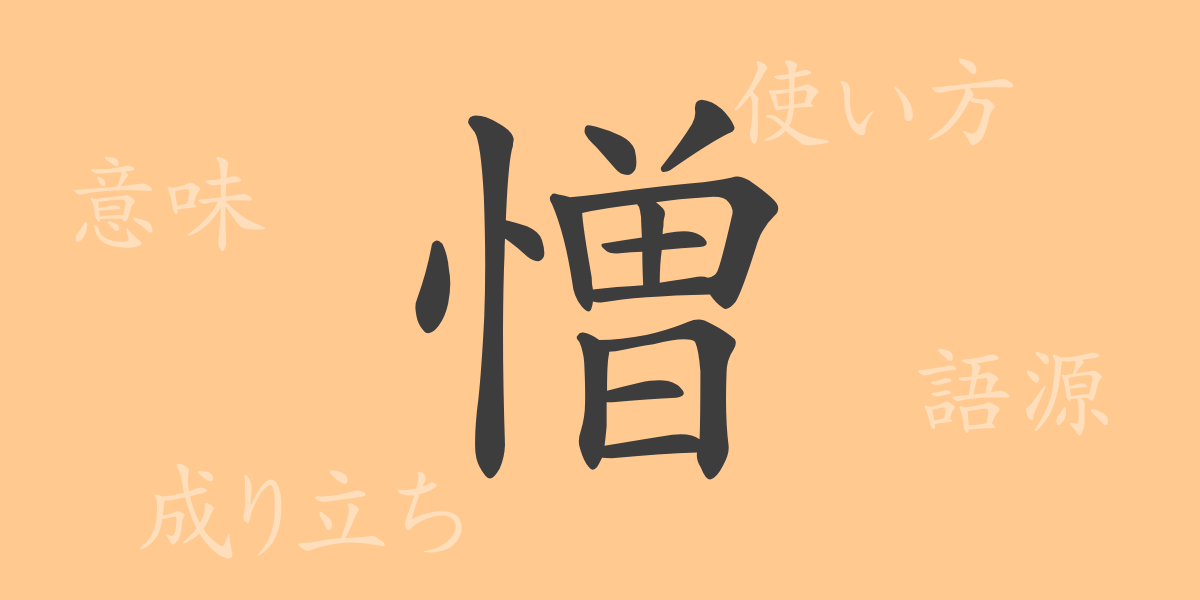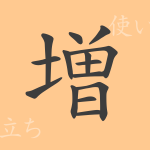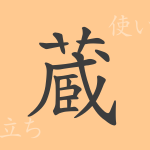(Japanese) Kanji character “(憎)” (ぞう – zō) plays a crucial role in the rich expressive power of the Japanese language, carrying deep meanings that unlock understanding of Japanese culture and language. This article explores the origin, meaning, usage, and idiomatic expressions and proverbs involving “(憎)”, revealing its full significance. Let’s unravel the nuances of history and emotions behind words to deepen our understanding of nuanced Japanese expressions.
Etymology of 憎 (ぞう – Zō)
The Kanji “(憎)” originated in ancient China as a word expressing emotions. It combines “(心)” meaning heart at the bottom and “(曽)” at the top. “(曽)” shares the same origin as “(曾)”, meaning accumulation, symbolizing something accumulating in the heart. From this combination, “(憎)” came to represent deeply ingrained negative emotions, particularly “hatred” or “intense disgust”.
Meaning and Usage of 憎 (ぞう – Zō)
The Kanji “(憎)” is primarily used to express negative emotions. Specifically, it is used in forms like “(憎む)” meaning “to hate” or “(憎しみ)” meaning “hatred”, indicating strong animosity or hostility. It is also used as the adjective “(憎らしい)” meaning “hateful” to express slight aversion towards people or things, sometimes with a mischievous affection.
Readings, Stroke Count, and Radical of 憎 (ぞう – Zō)
Let’s examine the readings and structure of the Kanji “(憎)” in detail:
- Readings: On’yomi (音読み) ‘ゾウ’ (zō), Kun’yomi (訓読み) ‘にく.む’, ‘にく.い’, ‘にく.らしい’, ‘にく.しみ’
- Stroke Count: 14 strokes for “(憎)”
- Radical: Radical is “(心)” or its variant “(忄)”. This radical is commonly found in Kanji representing emotions or spirit.
Idioms and Proverbs Using 憎 (ぞう – Zō) and Their Meanings
There are several idiomatic expressions and proverbs involving “(憎)”, including:
- 憎悪 (ぞうお – zōo): Strong hatred or animosity.
- 憎しみ合う (にくしみあう – nikushimiau): To harbor mutual intense animosity towards each other.
- 憎まれっ子世に憚る (にくまれっこよにはばかる – nikumarekko yo ni habakaru): A proverb indicating that disliked individuals often succeed against all odds.
- 愛憎 (あいぞう – aizō): The contrasting emotions of love and hate.
- 憎愛 (ぞうあい – zōai): Complex emotions of affection mixed with dislike or hatred.
Conclusion on 憎 (ぞう – Zō)
The Kanji “(憎)” serves as a symbol of complex human emotions within the Japanese language, playing a significant role. From everyday conversations to literary works, “(憎)” used in various contexts enriches language nuances and conveys subtle emotions. Through this article, we’ve explored the depth of meaning behind “(憎)” and the diversity of expressions it enables. Let’s rediscover the beauty of Japanese language by feeling the history and emotions encapsulated in each word.

























